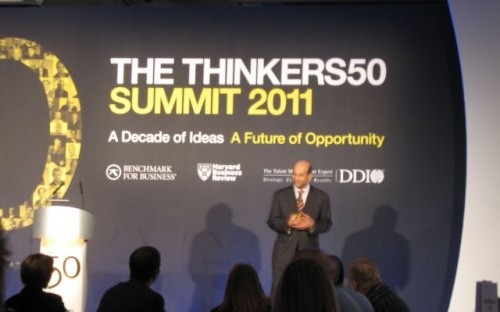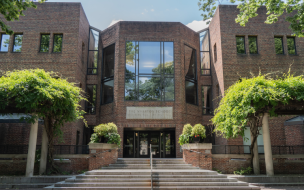Read on for more on Thinkers50 and some interesting ideas from the summit from Tuck professor Vijay Govindarajan, former Chief Innovation Consultant at General Electric!
The Thinkers50 global ranking of management thinkers is published every two years. The 2009 winner was CK Prahalad. The ranking is based on voting at the Thinkers50 website and input from a team of advisers led by UK-based business writers Stuart Crainer and Des Dearlove.
The Thinkers50 has ten criteria by which thinkers are evaluated -- originality of ideas; practicality of ideas; presentation style; written communication; loyalty of followers; business sense; international outlook; rigor of research; impact of ideas and the elusive guru factor.
This year’s winners were announced at the Thinkers50 summit in London this week.
As well as Christenson, who is an expert in innovation and growth, the top 50 list is a great way to mug up on business professors before your b-school applications or interviews.
Other gurus on the list include Insead’s W.Chan Kim and Renee Mauborgne (blue ocean strategy), London Business School’s Costas Markides, Cranfield’s Andrew Kakabadse and Vijay Govindarajan of the Tuck School of Business in the US.
Govindarajan also won the Breakthrough idea award for his $300 house campaign to re-invent housing for the world’s poorest people. As well as the main award for top thinker, awards were given for areas such as Innovation and Leadership.
We caught Govindarajan’s energetic lecture at the Thinkers50 Summit yesterday. The title of his talk was “Strategy Is Innovation”. So far, so typical, but his session was one of the highlights of the day, packed with real-life examples and illustrations of why businesses need to focus on the big, “non-linear” shifts that will make them successful in the future as well as perfecting what they do in the present.

Tuck Business School's Professor Vijay Govindarajan, sitting still for a rare moment
Govindarajan, or VG as he is known, pointed out that managing the present and creating the future require fundamentally different ways of thinking about markets and products. For example, when Ford entered the Indian market it adapted an existing model that was popular in America, for India’s consumers. However it was much too expensive for perhaps 95 per cent of Indian car buyers. On the other hand, Indian firm TATA developed the $2,000 Nano car specifically in response to what Indian consumers need and can afford.
VG also discussed the Grameen bank, which was set established in 1983 by Bangladeshi Nobel Peace prize winner Muhammad Yunus, as a micro lending bank for the very poor. Muhammad Yunus apparently asked executives from Bangladesh’s most successful commercial bank what their best practices were, and proceeded to do the exact opposite with his bank, for instance by not making loans of more than $15, lending to poor people in rural areas, lending to women, and going out to customers rather than expecting the customers to come to a branch.
VG likened such “non-linear” shifts in business thinking – the kid that lead to true innovation – to the step changes in Olympic high jumping styles, each of which that allowed athletes of the era to jump much higher than their predecessors. For more on this, try Googling “Scissors”, “Western Roll”, “Straddle, and “Fosbury Flop”.
Finally, VG talked about the importance of businesses setting specific, unrealistic goals in order to get somewhere, because he said, “we rarely exceed our expectations”. Compare US President JFK’s 1961 pledge that, “We will get a man on the moon and bring him back by the end of this decade,” to a statement like, “We want to be the aeronautical leaders within this decade”. Businesses that set clear goals are much more likely to achieve them, even against the odds.
RECAPTHA :
ec
f7
b2
10







